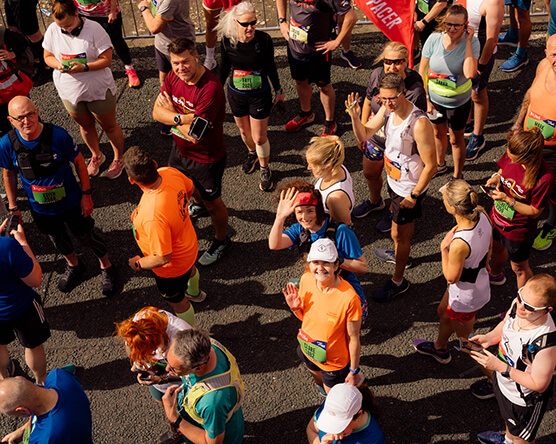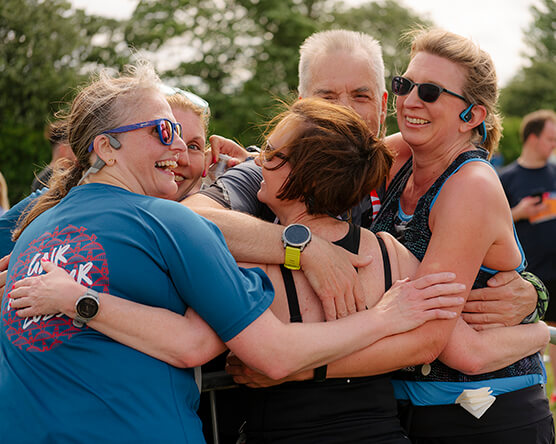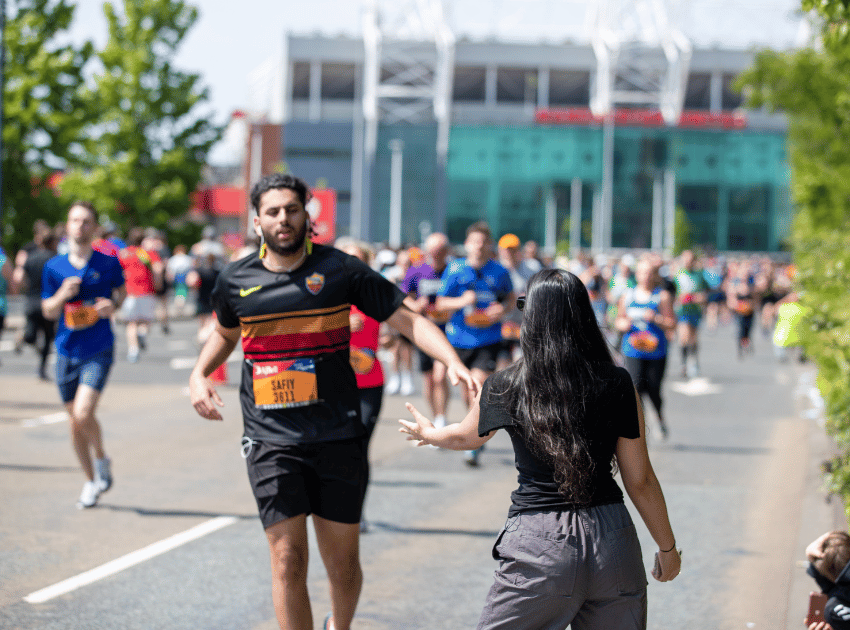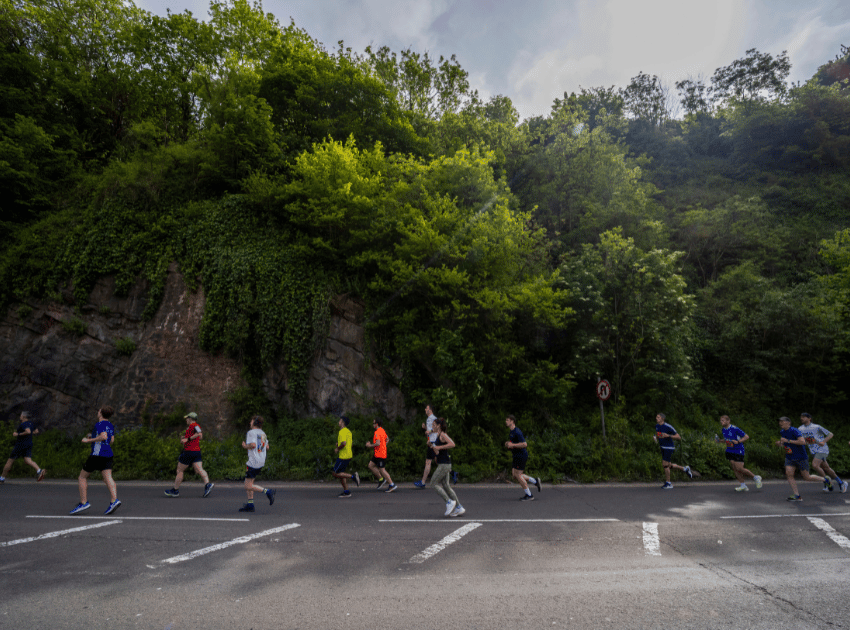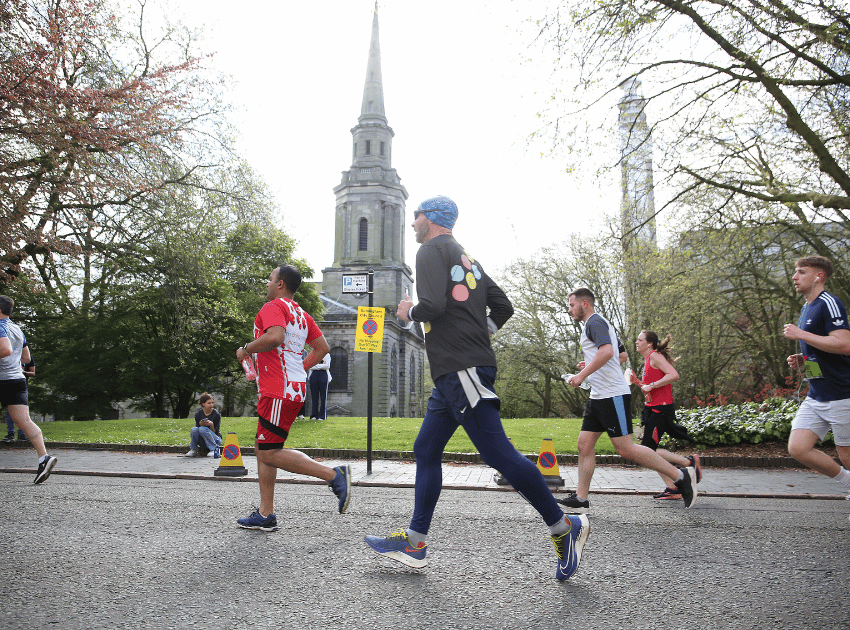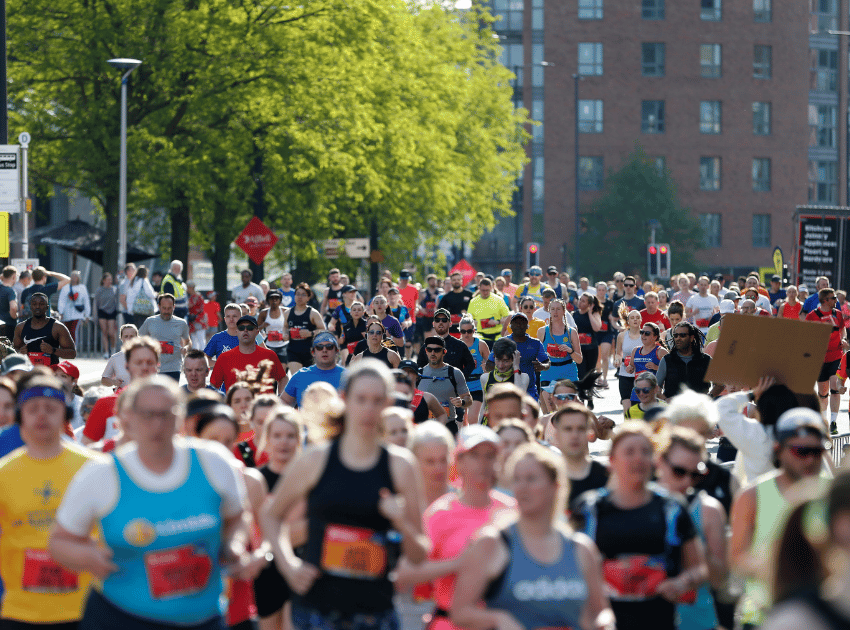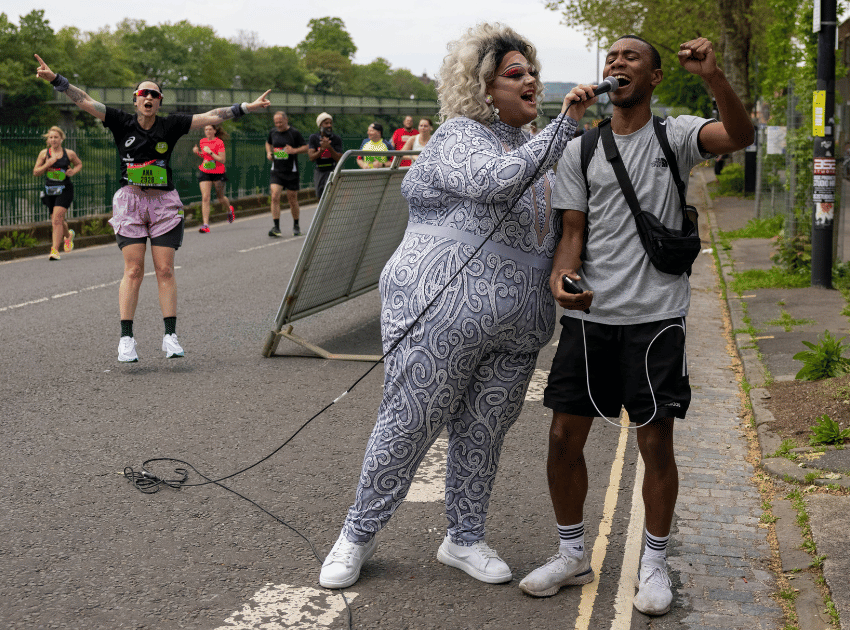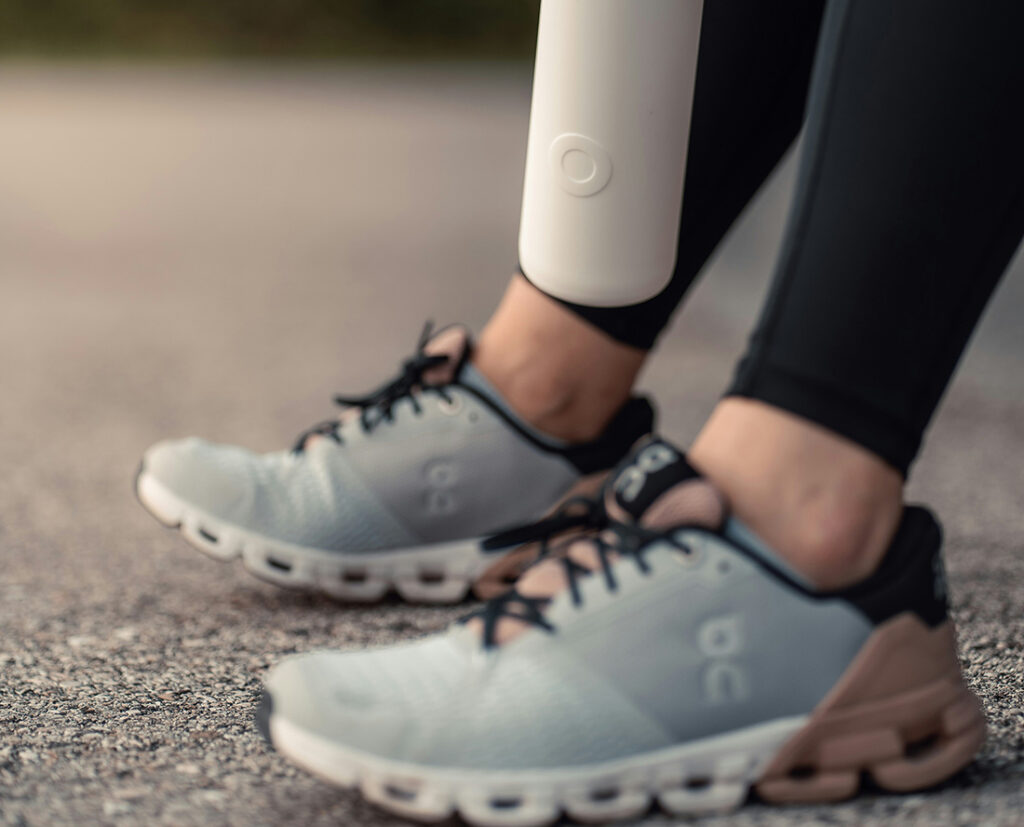There are some common running injuries that can cause problems for runners of all abilities from time to time. If you’re experiencing any of the aches and pains below you’re not alone! Read on for some (non-medical) advice on how to handle them.
“Help – I’ve been running a lot and I’ve got pain on the outside of my knee!”
This sounds a lot like an iliotibial band issue. The band itself is a tough, fibrous strip of connective tissue which runs along the outside of the thigh and connects the hip to the knee. ITBS can be really painful and is often brought on by training errors such as attempting too much too soon, wearing the wrong shoes or issues with your running technique.
However, there’s no way of knowing for definite without a proper investigation. A sports physiotherapist can carry out a gait analysis and identify what might be causing the problem – for example, poor movement on one side and then overcompensation on the other as a result.
In this case, the approach should be twofold: firstly, dedicated and standalone strengthening exercises to target the muscles which need them, as well as working to incorporate these techniques when running. In other words, gait retraining – after all, it’s no good heading straight back into bad habits.
“My shins really hurt when I run – is this the dreaded shin splints?”
The bad news is, yes, it’s likely that pain along your shins – whether the front, inner or outer – is down to shin splints, or medial tibial stress syndrome, (MTSS). This condition accounts for over 25% of all running injuries and it’s thought to be down to a tissue overload condition mainly affecting the tibialis posterior muscle and a related bone stress reaction. It’s as painful as it sounds – but as with all running complaints, it’s best to get it checked out by a professional.
A physiotherapist can advise you on your running technique and steps you can take to reduce the likelihood of shin splints – for example, shortening your stride and landing more lightly and evenly on the whole foot rather than just the heel might help.
“I’ve heard of runner’s knee – is that why mine’s hurting?!”
Runner’s knee is another common complaint for those clocking up the miles – usually the pain is below or around the knee and it’s made worse by squatting or bending. It could be down to having flat feet, wearing worn-down running shoes or aspects of your running technique, and the only way to really get to the bottom of it is a trip to an expert.
Many sports videos use video analysis of runners on a treadmill, then slow the images down and screenshot them to pinpoint different issues. For someone suffering from runner’s knee, overstriding, heel striking, hitting the ground with a relatively straight (extended) leg or a combination of all three could be to blame. Again, as before, dedicated standalone exercises to increase the capacity of the knee and patella tendon can help, as well as gait retraining to avoid falling back into bad habits.
Ow – my heel is suddenly hurting when I run…
Sounds like it could be tendonitis – Achilles tendonitis, to be specific. If you’ve suddenly upped your mileage, this could be the reason why: tendonitis is an injury connected with overuse, and can occur in different parts of the body. With runners, the issue commonly affects tendons around the hip, knee or the top of your hamstrings as well as the heel. The pain is worse when you move and sometimes you might feel a cracking sensation when you do. If that’s happening, it’s probably tendonitis.
Unlike muscles, tendons don’t contract (shorten), and when they’re under a lot of stress (such as when you’re running more and more without building up slowly), they can become inflamed. The good news is that you can treat mild versions of tendonitis yourself, with rest, ice and support – try a tubigrip. Once you get back into training, take it easy: make sure you’re following a training plan that increases distance and speed in a staggered, manageable way.
I’ve got a pain in my foot that’s been getting worse over time and now it’s even sore when I’m resting 🙁
Is it tender? Swelling? And in terms of your activity, have you been running more than normal recently?
Bones are constantly remodelling, helping them to adapt to the different loads and stresses placed on them. However, if you suddenly increase the amount of physical activity you’re doing without enough rest time in between, a stress fracture can happen – and the delicate bones in your foot are the likeliest candidate for this kind of injury.
If you think your sore foot might be a stress fracture, it’s important to get an x-ray to find out for sure. Continuing to run can make this kind of injury a lot worse, so lay off until you know what’s happening. Treatment varies depending on the location and the severity of the break – you might need to wear a special shoe, wear crutches or a padded boot. Or you might simply need to stop running for a while and take it easy for a few weeks.
Either way, it’s important to follow the advice of your clinician – although it’s frustrating to have to pause your training, continuing to place stress on the broken bone can make things a lot worse.
The bottom of my foot is killing me!
Oof, this is an easy one to diagnose: pain in the bottom of your foot, especially around the heel or arch, is often plantar fasciitis. The pain often gets worse when you start up activity again after resting, and then gradually eases off as you exercise but returns again afterwards.
It’s not always clear why plantar fasciitis occurs – some specialists link it to being older, carrying more weight or wearing unsupportive shoes while training. However, many agree that regular resting, elevating, icing and shoes with super-cushioned soles can help. Seeing a GP, physio or a podistraist for some specialist advice can be a good idea if the pain doesn’t improve within a couple of weeks.
Most running injuries creep up on you gradually. Spotting the early warning signs and taking appropriate action, rather than ignoring aches and pains, is the best course of action.



